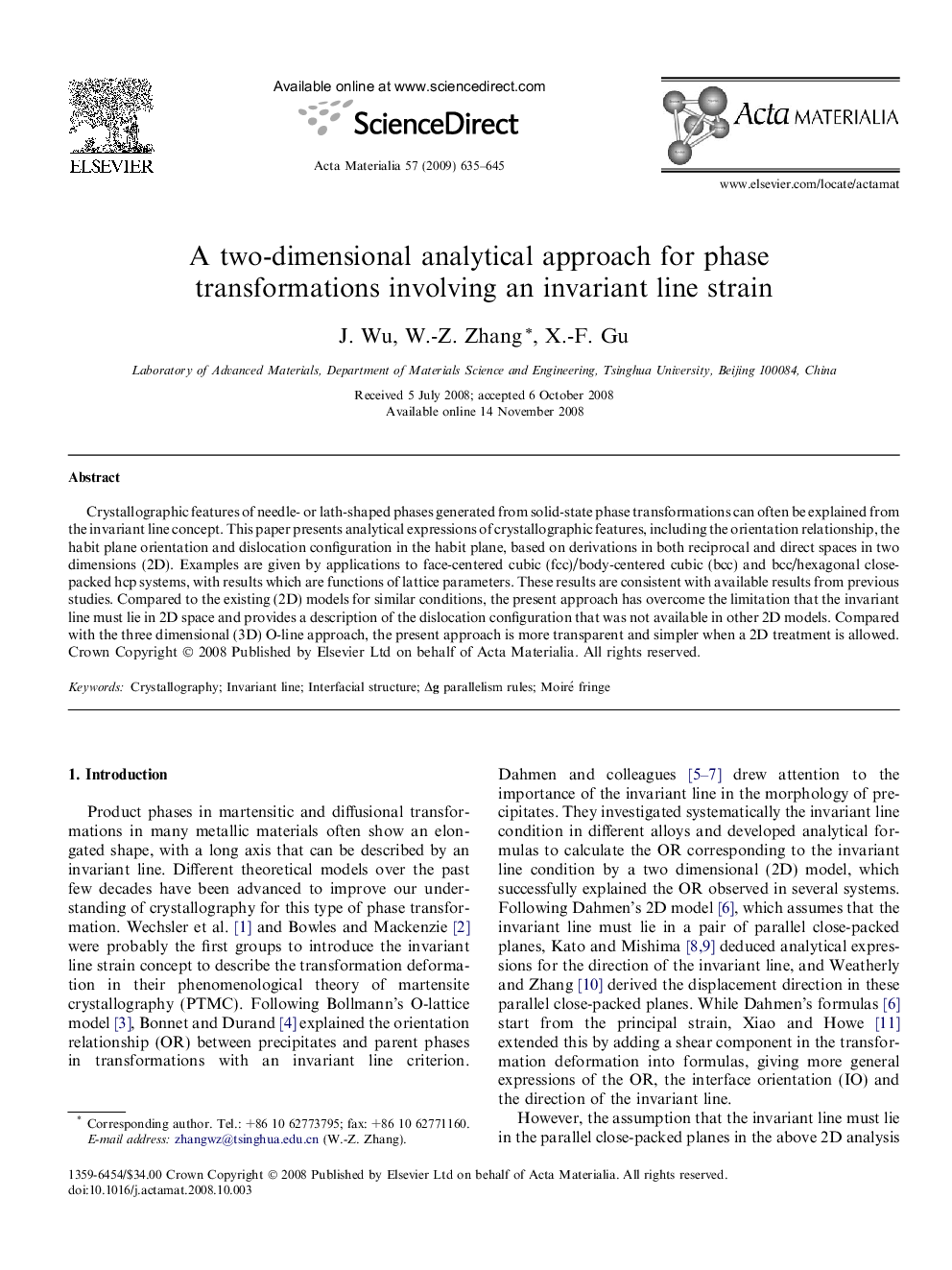| Article ID | Journal | Published Year | Pages | File Type |
|---|---|---|---|---|
| 1448180 | Acta Materialia | 2009 | 11 Pages |
Crystallographic features of needle- or lath-shaped phases generated from solid-state phase transformations can often be explained from the invariant line concept. This paper presents analytical expressions of crystallographic features, including the orientation relationship, the habit plane orientation and dislocation configuration in the habit plane, based on derivations in both reciprocal and direct spaces in two dimensions (2D). Examples are given by applications to face-centered cubic (fcc)/body-centered cubic (bcc) and bcc/hexagonal close-packed hcp systems, with results which are functions of lattice parameters. These results are consistent with available results from previous studies. Compared to the existing (2D) models for similar conditions, the present approach has overcome the limitation that the invariant line must lie in 2D space and provides a description of the dislocation configuration that was not available in other 2D models. Compared with the three dimensional (3D) O-line approach, the present approach is more transparent and simpler when a 2D treatment is allowed.
